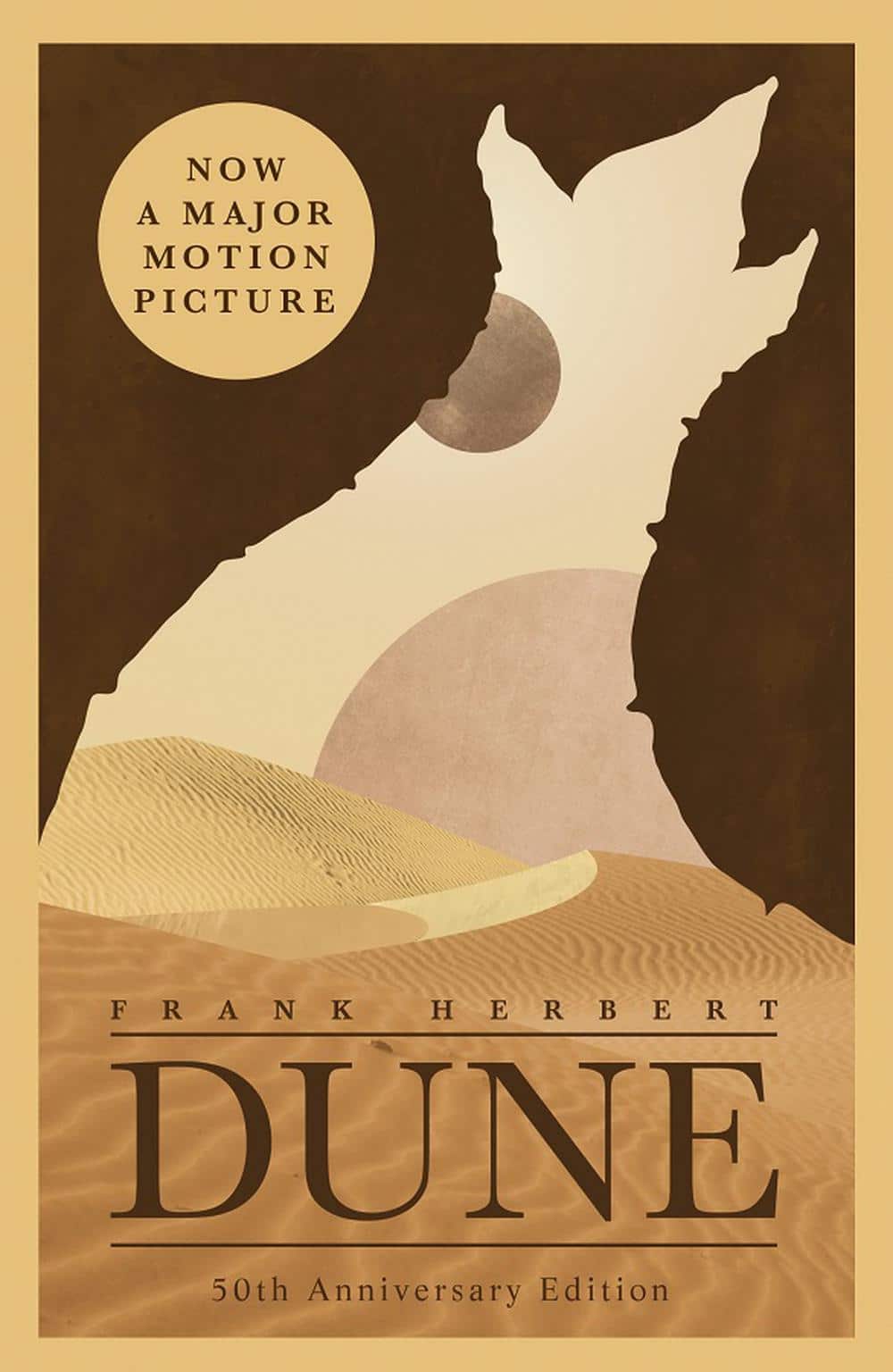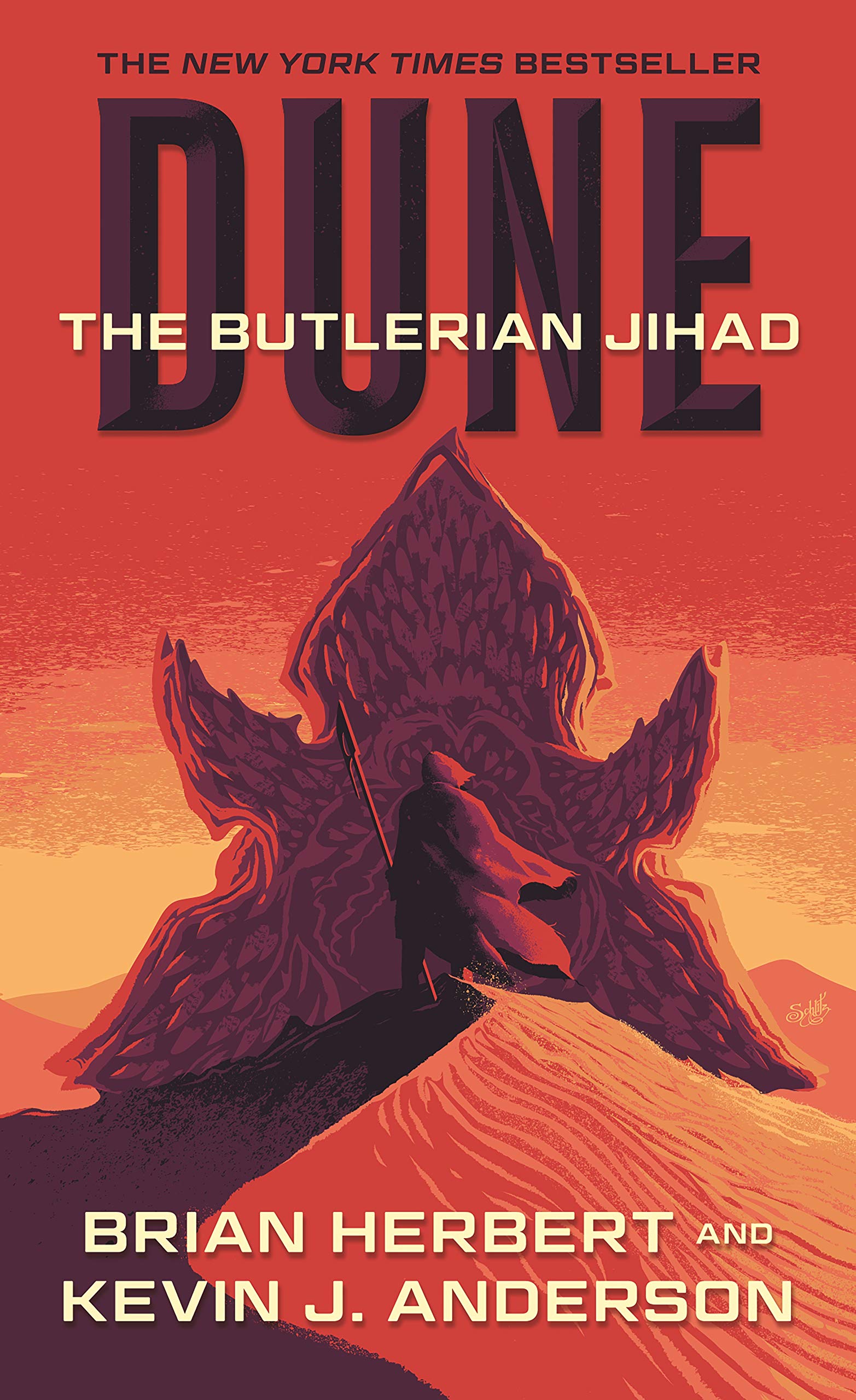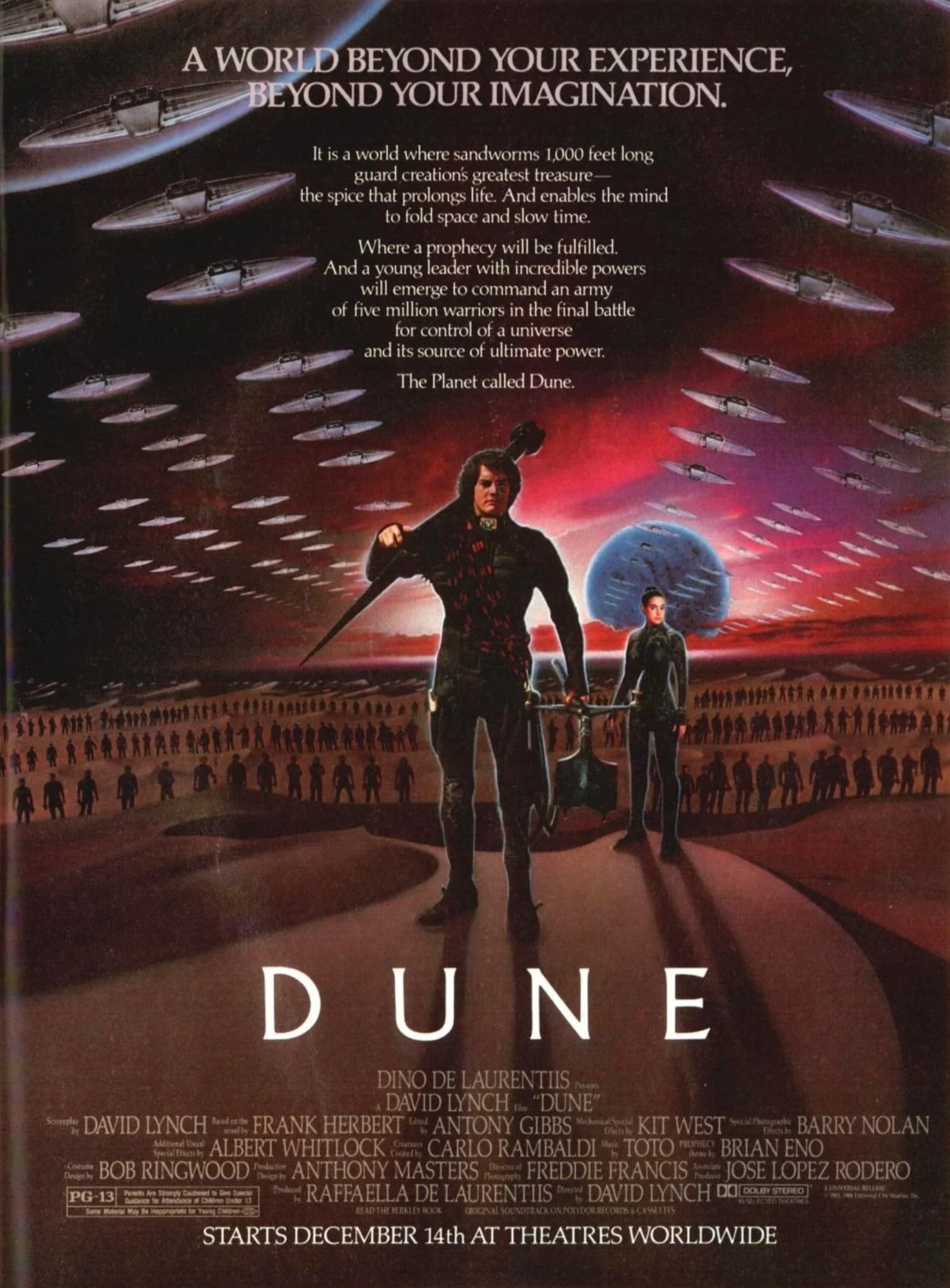A Brief History of the Dune Franchise: From the Books to the Movies
When it comes to science fiction universes, few creatures define their property as much as the sandworms of Arrakis. Like other famous creatures, such as Cthulhu, Rankors, and Xenomorphs, these creatures defined the expansive universe that they came from. Both the natives and visitors to Arrakis feared and respected the power of these beasts, that grew over four hundred meters long. Moreover, the impact of the sandworms was felt in the second defining feature of the series: Spice Melange.
While these creatures created a memorable image in all of Dune’s related media, the sandworms only represent a small fragment of the cultural impact of the series. Over the years, Dune has left its mark on many notable franchises, like Star Wars. While the obvious tributes to Dune, like the Graboids of Tremor, help testify to the strength of the franchise, Dune was much more than that.
Dune was one of the first novels that presented the concept of a chosen one that would rise to become the savior of the world then deconstruct it. While that trope has now overtaken most works, Dune set down the blueprint. Moreover, Dune presented a world filled with political strife and intrigue, where the wealthy fought over the spice trade. Rather than just being a good story, the franchise shone a light on the political corruption of our world.
With fifteen novels and two movies, Dune has lasted the test of time. So, join us as we explore the history of this epic science-fiction franchise.
Join us as we look back at Dune books and movies
The novels by Frank Herbert

At the age of thirty-nine, Frank Herbert decided to focus his attention on gathering research for a novel that would become his defining work. As he developed the world of Dune, he decided to ground the work with complex political and psychological themes that readers could relate to. Rather than provide a superficial adventure, he spent years plotting out the basic elements of his greatest work, Dune.
By 1965, Dune, which saw the survivor of the House of Atreides, Paul Atreides, rise to become the new emperor, hit bookshelves. Unlike the typical depiction of a fated chosen one, Paul Atreides was the product of eugenics, selected breeding to create the desired outcome. His existence was the product of a long breeding program in hopes of creating a powerful being that could merge the female and male genetic memories of the Bene Gesserit. However, before understanding how Paul Atreides came to be, one must first understand the most important substance in the universe, spice.
Why is the spice so valuable?
For thousands of years, Dune’s universe has run thanks to the unique properties of a special substance, the Spice Melange. Found in the sands of Arrakis, the sandworms and their larvae, the sandtrout, produced excretions that eventually made their way to the surface. As the fungal mater changed thanks to the planet’s harsh heat and winds, the excretions became the most valuable substance in the universe, Spice.
As humans discovered, this substance reacted to the body in many powerful and strange ways. First, the substance prolonged the lifespans of those who regularly ingested it. Thus, many fought over it for the chance at long and healthy lives.
However, the spice also had significant effects on the mind. Addictive on its own merits, the spice altered certain people’s mental abilities such that they became living computers, the Mentat. Heavy use of the spice altered the body as it expanded the mind, as in the case with the Guild Navigators. Meanwhile, significant spice use also created a notable blue glue in the user’s irises.
Otherwise, the Bene Gesserit used spice to give their nuns unique mental powers, such as foresight. These women could also directly influence people by modulating their voices as they issued commands. Notably, the spice gave them the power to control their pregnancy, from the timing to the gender. These women then hoped to expand their power through genetic manipulation to create a child that had both their powers and the abilities of a Mentat. However, their plans went awry when Jessica gave birth to Paul Atreides.
Overthrowing the Emperor
After Padishah Emperor Shaddam IV sent his father, Leto Atreides to Arrakis, Paul witnessed how the empire betrayed his family. As the planet was the sole source of the precious spice, the prior rulers of the planet, the Harkonnen, despised that their rivals, the House of Atreides, gained control over the planet. Even though Leto Atreides suspected the new position was a trap, he had no choice aside from accepting it. As expected, Leto lost his life on the desert planet. However, his son survived.
As Paul struggled to survive in the harsh desert world, he joined up with the native Fremen, who soon saw him as their Mahdi, the prophetic savior. With Paul’s assistance, they launched a Jihad to take control over their home world. This rebellion also gained the attention of both Harkonnen and the emperor, giving Paul the opening to avenge his father’s death. Even after Paul took the throne as the new Emperor, the freeman’s revolt remained strong.
After the first novel
Frank Herbert wrote several more novels before he passed away in 1986. The tales of Dune continued in 1969 with Dune Messiah, where Paul’s struggles continued even as the Emperor. Despite his struggles, Paul perished by the end of the second novel.
Then, the series returned with The Children of Dune in 1976, where Paul’s children took center stage. Next came the God Emperor of Dune in 1981, which jumped 3500 years into the future. During the events of this novel, Paul’s son, Leto II, transformed into a sandworm. Following that, Herbert wrote the Heretics of Dune in 1984, which jumped forward another 1500 years into the future. Rather than focus on the descendants of Atreides, this book followed new clans of humanity who chose to return to the Old Imperium after the Scattering.
Herbert’s final Dune novel, Chapterhouse; Dune, came out in 1985, a year before his death. As in the prior novel, the Bene Gesserit became the focus of the book as they questioned the golden path. While Herbert began work on a seventh novel, he never finished it. Instead, his son took up the torch to continue the series.
The novels from Brian Herbert and Kevin J. Anderson

When Frank Herbert’s son, Brian Herbert, took over the Dune franchise, he trusted one man to help him continue his father’s legacy. Thus, he worked closely together with Kevin J. Anderson to keep the series alive. Unlike his father, who constantly looked to the future of the Dune’s plot, Brian signed on to create a prequel series for Bantam Books. Thus, they introduced the world to Dune: House Atreides in 1999. This prequel trilogy continued with 2000’s Dune: House of Harkonnen. Their trilogy concluded in 2001 with Dune: House of Corrino.
Following the first trilogy, the duo continued to author more novels in the Dune universe. Their next three novels became known as the Legends of Dune. These novels explored even more elements of Dune’s rich history. So, they began in 2002 with Dune: The Butlerian Jihad. Following that novel, they wrote Dune: The Machine Crusade in 2003. The final entry of this trilogy came out in 2004 with Dune: The Battle of Corrin.
Following these trilogies, the duo continued to write Dune books. For instance, the duo took Frank Herbert’s notes on Dune 7 to finish his vision in two novels published in 2006 and 2007. They ten created several mini-series like the Heroes of Dune and The Caladian Trilogy. For now, it seems like the Dune books from this duo will continue for years to come.
David Lynch’s Dune (1984)

Decades after Frank Herbert’s first Dune novel hit bookshelves, Hollywood set forth to create an adaption of the fantasy epic. After years of unsuccessfully getting the project going, David Lynch stepped into the director’s role to get the project moving. Even though David Lynch had previously not heard about the novel, he fell in love with Dune after reading it. After writing over five drafts of the script, Lynch conceded to the need to release Dune in a single film.
In the end, he condensed the material from the book into a 137-minute-long film that still felt too rushed. While the film successfully touched on several plot points from the novel, it could not expound on those points. Furthermore, Lynch decided to include inner dialogue as voice-over narration, which did not sit well with many viewers.
David Lynch took several controversial decisions as he directed the film. While the Holtzman shields were crucial parts of the novels, they only barely shimmered over a person. However, the film decided to include blocky shields that clunkily followed around the actors on screen. He also gave Harkonnen a grotesque appearance.
While some still treasure this version, the film flopped at the box office. Thus, any plans to adapt the sequels also fell to the wayside. While fans waited for another shot at a Dune film, the Sci-Fi channel debuted a Dune mini-series in 2000 which successfully led to a sequel mini-series, 2003’s Children of Dune.
Denis Villeneuve’s Dune (2021)

Years after David Lynch’s Dune, Hollywood was ready to give the novel a second chance. By 2016, Legendary Pictures picked up the film and TV rights to Dune. So, they decided to give Dennis Villeneuve the chance to fulfill his lifelong dream to create a Dune movie. Even though the man had other projects that he needed to complete, like Blade Runner 2049, Legendary decided to hold the project until he was available.
Unlike Lynch, Villeneuve decided that no single movie adaption of Dune would appropriately tell the scope of the epic. So, he decided to split the movie into two parts. Even though the studio had only greenlit one film, he refused to condense the film. Meanwhile, the marketing for the film did not highlight that the film was the first part of the story. So, the sudden ending to the film surprised some audiences.
Even though the film came out amid the pandemic, it captured the hearts of fans across the world. So far, the film has grossed over one million dollars domestically. Meanwhile, most critics gave the film high praise thanks to its scope and grandeur. Thanks to the enthusiasm for this film, the second part of the story has been greenlit. So, the worms of Arrakis will return to the silver screen.
What is your favorite version of the Dune story?
Today, we have examined the various books and movies that tell the story of Dune. Since 1965, Dune has enraptured audiences with its political intrigue and lore. Even though the original writer passed away decades ago, Dune‘s story is still going strong. Between the continued novels, graphic novels, and movies, Dune remains a key science-fiction franchise.
So, which version of Dune do you prefer the most? Do you love the original books the most? Do you love the most recent film? Let us know in the comments below.
Do you have old and used Dune collectibles and toys?
If you have a collection of old and used toys, you can turn those toys into cash. There is no reason to let those old toys collect dust. Contact us today to sell your Dune toy collection.
About the Author
Chris Ingledue is the founder and owner of Wheeljack’s Lab pop Culture and Toy Shop. His vision has always been to reunite customers with their favorite childhood toys and pop culture, triggering fond memories, and reigniting their imaginations. Every day he works in the “lab” where it’s Christmas 365 days a year; scouring the internet – like we did the Sears Catalog of yesteryear – for the next great treasure, awaiting the arrival of the postman as if he was Santa Claus himself and helping collectors worldwide with their own versions of Christmas. For Chris, every day as a vintage toy buyer is an absolute joy!